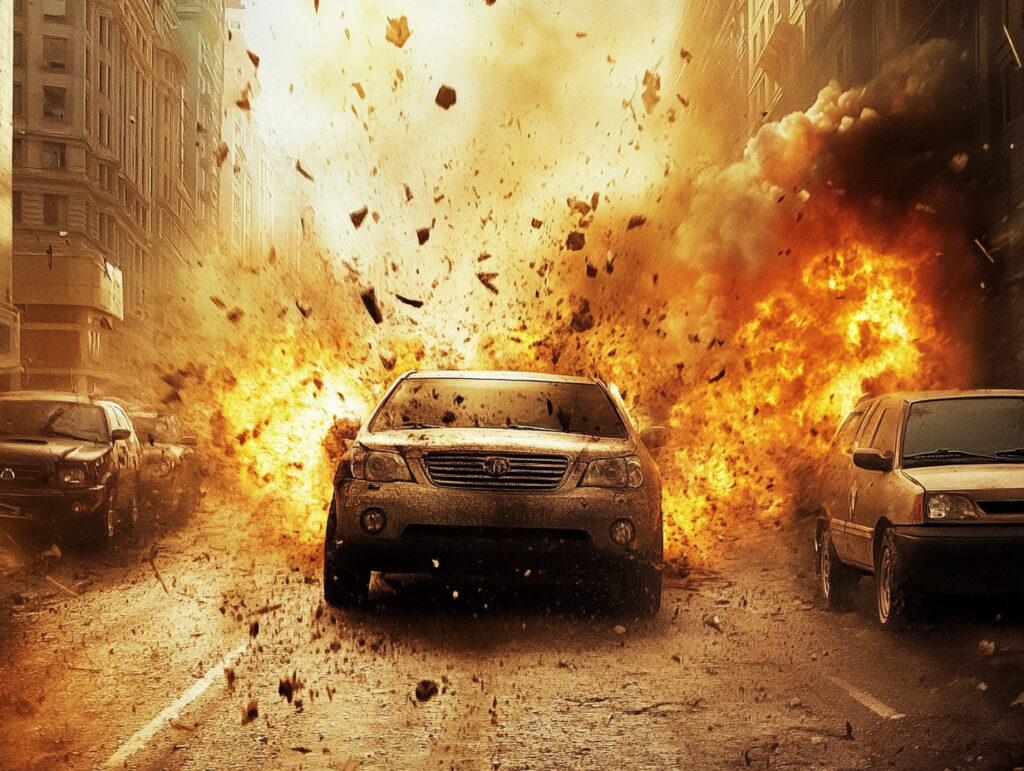
Do technologically poor countries have to resort to weapons of mass destruction to balance the balance of power against the modern powers?
In a world where technological inequalities between nations are widening, the question arises as to whether technologically poor countries are obliged to obtain weapons of mass destruction in order to balance forces with the modern powers. This article explores the strategic and scientific implications of this issue, analysing the motivations, risks and consequences for global security.
The technological gap between nations is a determining factor in modern international relations. Countries with limited resources and an underdeveloped technological infrastructure often find themselves in a weak position on the international stage. This disparity raises the following question: are these countries condemned to seek weapons of mass destruction (WMD) to redress the balance of power against technologically advanced nations? To answer this question, it is essential to understand the geopolitical dynamics, the motivations of states, and the risks and consequences associated with the proliferation of such weapons.
1. Technological disparity and the balance of power
Technological disparities between nations create an imbalance of power at international level. Technologically advanced countries enjoy military, economic and strategic superiority, enabling them to exert considerable influence on a global scale. For example, the United States, with a military budget of more than 800 billion euros in 2023, is investing massively in cutting-edge technologies such as artificial intelligence, drones and cybernetics. In comparison, many developing countries devote a much smaller proportion of their GDP to defence, with limited technological capabilities.
Faced with this imbalance, some countries may be tempted to turn to WMD as a means of deterrence and negotiation. The acquisition of such weapons, although risky, could offer them a form of protection against military intervention or economic sanctions. This is the case of North Korea, which, despite limited resources, has developed a nuclear programme to ensure its survival in the face of international pressure.
2. State motivation for acquiring WMD
There are many complex reasons why certain countries seek WMD. The first is often the perception of an existential threat. When states feel vulnerable to much more powerful adversaries, obtaining WMD becomes an option for deterring potential aggression. It’s a “stick behind the door” mechanism, where the mere existence of such weapons can be enough to deter an attack.
The second motivation relates to prestige and international influence. Possessing WMD can enhance a country’s status on the world stage, placing it in a position where its interests must be taken into account by the major powers. India and Pakistan, for example, have both developed nuclear capabilities, not only for regional security reasons, but also to assert themselves as major players in South Asia.
Finally, WMD can be seen as an asymmetric response to the superior conventional capabilities of technologically advanced nations. Faced with a modern army equipped with drones, satellites and cyber-weapons, a nuclear bomb or a chemical arsenal can offer a form of strategic compensation.

3. The risks associated with the proliferation of WMD
The proliferation of weapons of mass destruction poses serious risks to global security. One of the main dangers is the risk of nuclear war. A conflict involving WMD, even on a small scale, could have catastrophic consequences not only for the countries directly involved, but also for the planet as a whole. Nuclear explosions generate radioactive fallout, capable of causing massive deaths, cancer and lasting environmental damage.
Furthermore, the proliferation of WMD increases the likelihood of these weapons falling into the hands of non-state actors, such as terrorist groups. Political instability in certain countries that possess these weapons increases this risk, as illustrated by the situation in Syria, where chemical weapons have been used in a context of civil war.
Finally, the race for WMD can trigger heightened regional tensions, leading to excessive militarisation and an environment of mutual distrust. This can be seen in South Asia, where India and Pakistan continue to accumulate nuclear weapons, despite attempts at dialogue and disarmament.
4. Geopolitical and diplomatic consequences
The acquisition of WMD by technologically less advanced countries has significant geopolitical and diplomatic repercussions. Firstly, it can lead to international isolation. Nations that develop WMD in violation of international treaties, such as the Treaty on the Non-Proliferation of Nuclear Weapons (NPT), risk severe economic sanctions and diplomatic marginalisation. Iran, for example, has been subject to international sanctions for years because of its nuclear programme.
Secondly, it could provoke an arms race in the region. When one country obtains WMD, its neighbours may feel the need to build up their own arsenals to protect themselves, creating a vicious circle of militarisation. This is particularly worrying in already unstable regions, where mistrust and historical rivalries exacerbate tensions.
Finally, the possession of WMD can limit diplomatic options for resolving conflicts. The threat of massive retaliation makes negotiations more complex and increases the risk of miscalculation, where a situation that could be resolved peacefully degenerates into open conflict.
5. Strategic alternatives for developing countries
Rather than seeking to acquire WMD, technologically less advanced countries can explore other means of improving their security and international position. One potential strategy is to invest in regional and international alliances. By joining coalitions such as the African Union or the Shanghai Cooperation Organisation, these nations can benefit from collective security and increased influence without resorting to WMD.
Another alternative is the development of asymmetric non-nuclear capabilities. For example, cyber defence and electronic warfare capabilities offer less costly and less risky means of deterrence. Countries such as Iran have demonstrated their ability to carry out sophisticated cyber attacks against technologically superior adversaries, enabling them to compensate for some of their conventional military weaknesses.
Finally, these countries can invest in economic and technological development to improve their internal resilience and reduce their dependence on extreme military means. Education, infrastructure and technological innovation are essential pillars in building sustainable power. The example of Singapore shows that a nation can become influential on the international stage through strategic investment in technology and the economy, without possessing WMD.
The idea that technologically poor countries are condemned to obtain weapons of mass destruction in order to compete with modern nations is a complex subject that raises many ethical, strategic and diplomatic questions. Although the possession of such weapons may offer a form of deterrence, the associated risks and consequences are considerable. There are viable alternatives for these countries, based on international cooperation, asymmetric development and improved internal capabilities, which can provide security without resorting to such extreme measures. Global security depends on reducing the proliferation of WMD and promoting peaceful solutions to international conflicts.
War Wings Daily is an independant magazine.